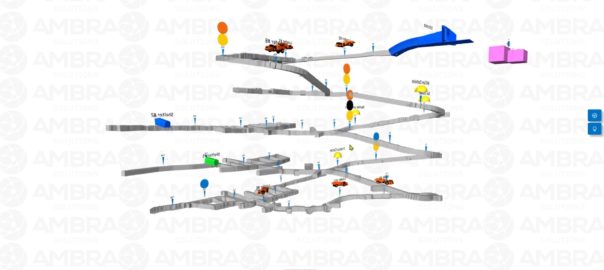The Canadian Intellectual Property Office has officially approved the patent for Ambra Solutions’ iPS (intelligence positioning system) marking, what it says, is a great milestone for not only the company, but for the whole mining industry.
“We are very excited to receive this patent for the leading-edge tracking system we worked so hard on and are proud to have successfully deployed in several mines who are thrilled by the enhancement of their efficiency and safety throughout their operations thanks to this technology,” Éric L’Heureux, Founder and CEO of Ambra Solutions, said.
In the heart of even the most remote open-pit or underground mines, Ambra creates and deploys private LTE/5G networks tailored to each mine’s needs, woven to ensure seamless communication. Within this network, discreet yet powerful Ambra beacons are strategically positioned, emitting unique identifiers locally and, empowered by the network, connected devices gather the information to relay crucial data to our iPS core, the company explains. Complementing this infrastructure is a tracking controller integrated into the network, mapping each beacon’s identifier to its spatial coordinates in real time. And beyond tracking, this solution boasts integration capabilities, allowing the integration of data from other systems, integration with third party technologies (VoD, other location equipment vendors, etc), auto-creation of unsurveyed or drawn maps, high accuracy positioning in real time and review travel history.
Intercepting the beacon identifier transmitted via the radio frequency network by the communication device and leveraging the tracking data repository to match the received identifier with its corresponding spatial coordinates, the data culminates at the control centre where it is analysed and aggregated to be visualised on a 3D interface in real time, facilitating near-instantaneous critical decision making, Ambra says.
It continues: “With this innovative patented solution, pinpointing the exact location of all communication devices connected to the iPS ecosystem within the remote environment becomes seamless and efficient, making mines not only optimally performant, but most of all, ensuring the safety of its workers.”
L’Heureux added: “This unique patent allows us to provide a reliable underground tracking system powered by the same 4G/5G cable used for communication. In addition to eliminating maintenance, this solution allows mining companies to reduce battery-powered beacons and avoid disposing batteries on a regular basis.”









